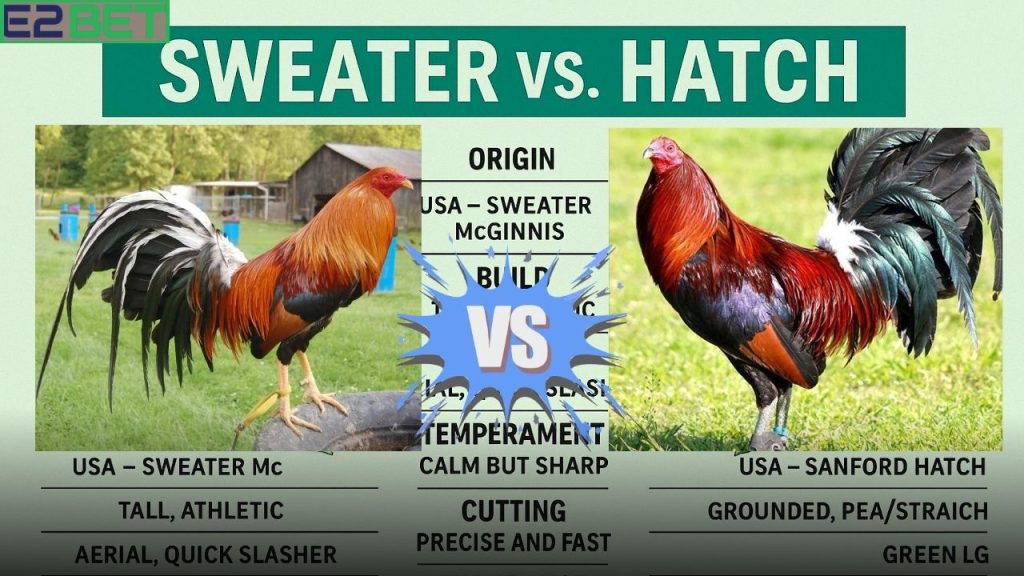Table of Contents
In the global gamefowl community, few rivalries command more respect, discussion, and passionate debate than the classic match-up: Sweater vs. Hatch. These two bloodlines are not just popular—they’re legendary, and over the years, have become symbols of power, endurance, and victory inside the cockpit.
But when it comes to performance in the pit, conditioning, adaptability, and fight outcome, which bloodline truly dominates? Let’s take a deeper dive into the origins, fighting styles, strengths, weaknesses, and breeding logic behind these two giants of the sabong world.
1. Historical Background: From Legacy to Legend
🐔 Sweater Bloodline
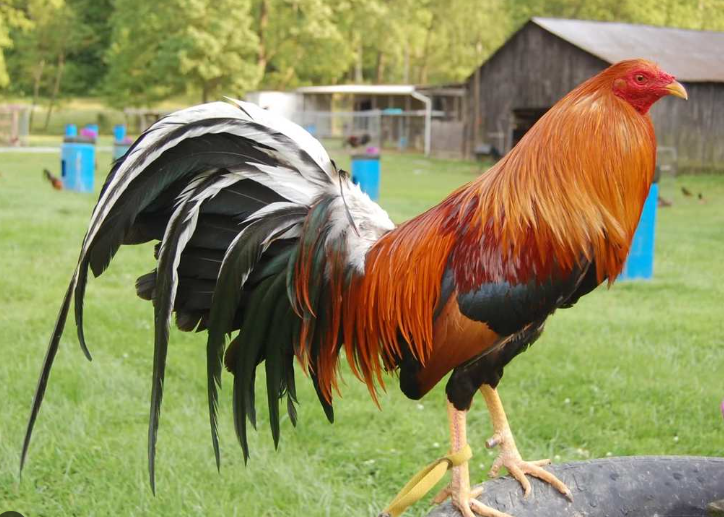
- Origin: USA, developed by Herman “Sweater” McGinnis
- Bloodline Composition: Red Game, Yellow Birchen, Kelso, and Boston Roundhead (varied versions)
- Purpose-Bred For: Speed and precision cutting
The Sweater line came into prominence when McGinnis developed a high-flying, leg-powered slasher that could finish fights fast. Its golden era in derbies began in the 1970s and continues today, particularly in the Philippines, Mexico, and Latin America.
🐓 Hatch Bloodline
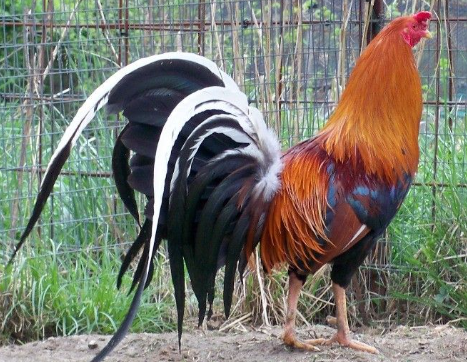
- Origin: Developed by Sanford Hatch in Long Island, New York
- Composition: Blend of Kearney Whitehackle, Gilkerson Hatch, and Thompson lines
- Purpose-Bred For: Power, aggression, and game
Hatch fowls are built like tanks—low-bodied, thick-muscled, and relentless. They became the gold standard for ground-based brawling styles and were refined over time by breeders like Harold Brown and Bill Hatch.
2. Bloodline Characteristics and Genetic Identity
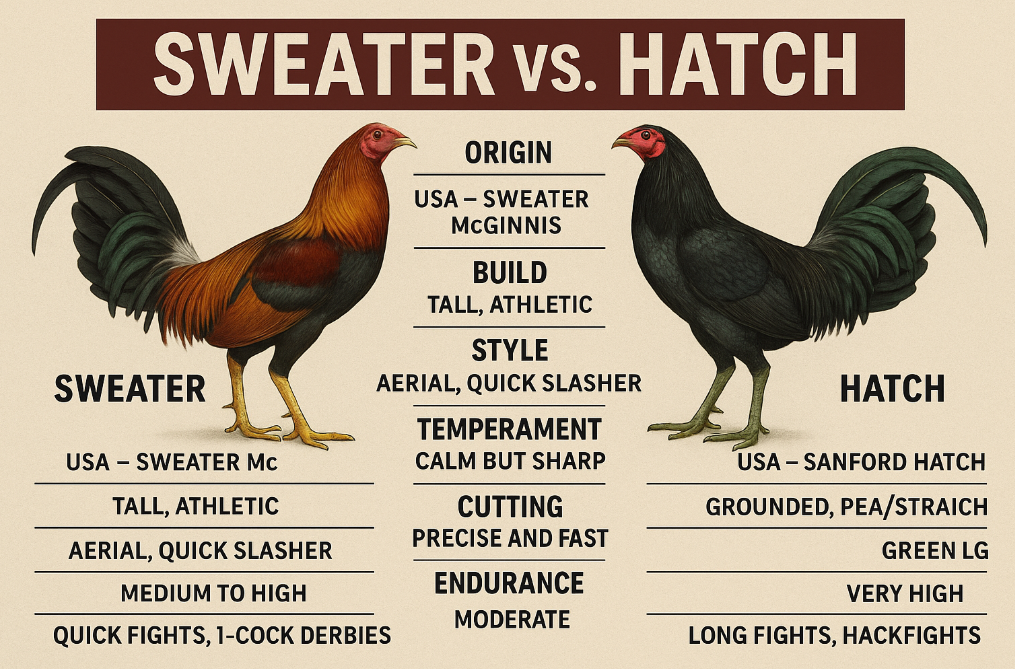
| Attribute | Sweater | Hatch |
|---|---|---|
| Temperament | Calm but intense | Fierce, fiery |
| Body Build | Long-legged, elegant frame | Stocky, muscular |
| Color | Lemon red, yellow legs | Green legs, pea or straight comb |
| Wing Span | Broad, useful for aerial attacks | Average but strong |
Sweater Traits:
- High flyer with explosive vertical attacks
- Fast slasher with deadly accuracy
- Smooth, calculated movements
- Good “finisher” in short-knife matches
Hatch Traits:
- Strong legs and solid body
- Relentless frontal attacker
- Durable and can take damage
- Ideal for longer matches or “wars”
Sweater vs. Hatch: Side-by-Side Comparison
| Category | Sweater | Hatch |
|---|---|---|
| Origin | USA – Sweater McGinnis | USA – Sanford Hatch |
| Build | Tall, athletic | Stocky, muscular |
| Style | Aerial, quick slasher | Grounded, power attacker |
| Temperament | Calm but sharp | Aggressive and fierce |
| Cutting | Precise and fast | Strong but less accurate |
| Endurance | Moderate | High |
| Aggression | Medium to High | Very High |
| Best For | Quick fights, 1-cock derbies | Long fights, hackfights |
3. Fighting Style Breakdown: Air vs. Ground
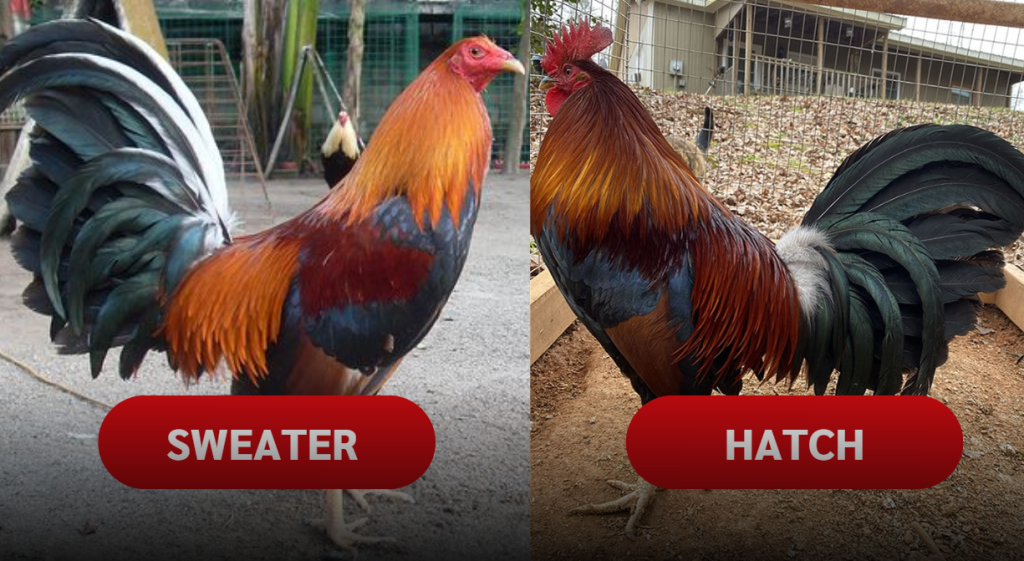
| Element | Sweater | Hatch |
|---|---|---|
| Opening Move | Jumps and strikes early | Charges straight in |
| Weapon Preference | Short knife or slasher | Long knife or gaff |
| Best Arena Setup | Clean pits, aerial space | Compact rings, tight corners |
| Fight Duration | Wins fast, clean finishes | Can last longer and wear down foes |
Sweater Advantage
Sweaters excel when speed and elevation are critical. In high-stakes derbies, where points are counted in seconds, Sweaters can deliver a knockout in one clean jump-cut combination.
Hatch Advantage
Hatch fowl thrive in drag-out, punishing battles. They don’t give up and have the mental and physical toughness to absorb blows and keep going. In “Hackfights” or multi-bout tournaments, they shine the longer the fight lasts.
4. Breeding and Cross Compatibility
Why Breeders Cross Them
Breeders often aim to balance the finesse of Sweaters with the brute force of Hatch fowls. This hybrid is popular in the Philippines and Mexico due to its:
- Sweater traits: timing, cutting precision, leg strength
- Hatch traits: heart, aggression, durability
Popular Crosses of Sweater vs. Hatch :
- 50/50 Sweater-Hatch – All-around gamefowl, suited for any format
- Hatch over Sweater hen – Inherits Hatch toughness, Sweater leg-work
- 3/4 Hatch, 1/4 Sweater – Power-based with a slasher twist
These hybrids are particularly dangerous as they combine the killer instinct with tactical execution.
5. Pit Performance and Derby Stats (Sweater vs. Hatch)
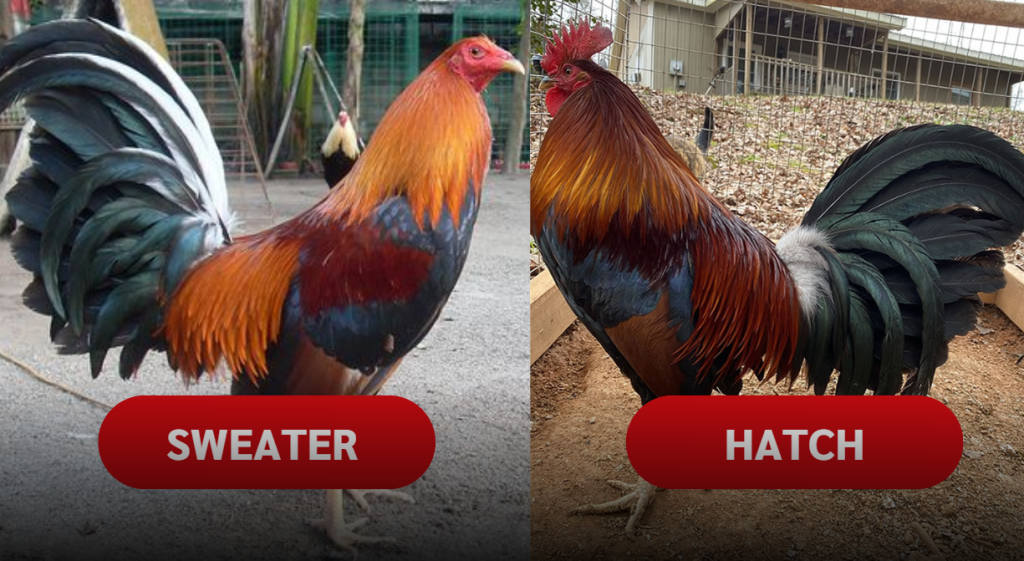
In many World Slasher Cup and local derbies:
- Sweaters win by early kill—effective for one-cock or quick resolution formats.
- Hatch fowls win by survival and pressure, effective for long fights or team events.
Statistically speaking:
- Sweater-based crosses have a higher win rate in short-knife fights (3-4 minutes)
- Hatch-based lines have more wins in longer bouts, especially 5-cock or 7-cock mains
Some handlers say:
“If you’re betting on a one-minute knockout, choose Sweater. If you want your bird to fight like it’s his last breath—choose Hatch.”
6. Cultural Impact: Icons of Sabong Heritage
Both bloodlines (Sweater vs. Hatch) have transcended breeding—they’re part of sabong culture:
- In the Philippines, a “Sweater” means elegance, class, and danger.
- A “Hatch” means heart, strength, and warrior spirit.
- Many top farms (e.g., Firebird, RGA, Nene Araneta, REH) have integrated both bloodlines into their foundations.
These lines are also a status symbol. Owning a winning Sweater or a hard-pounding Hatch earns instant respect in any cockpit.
7. Final Verdict: Who Truly Dominates?
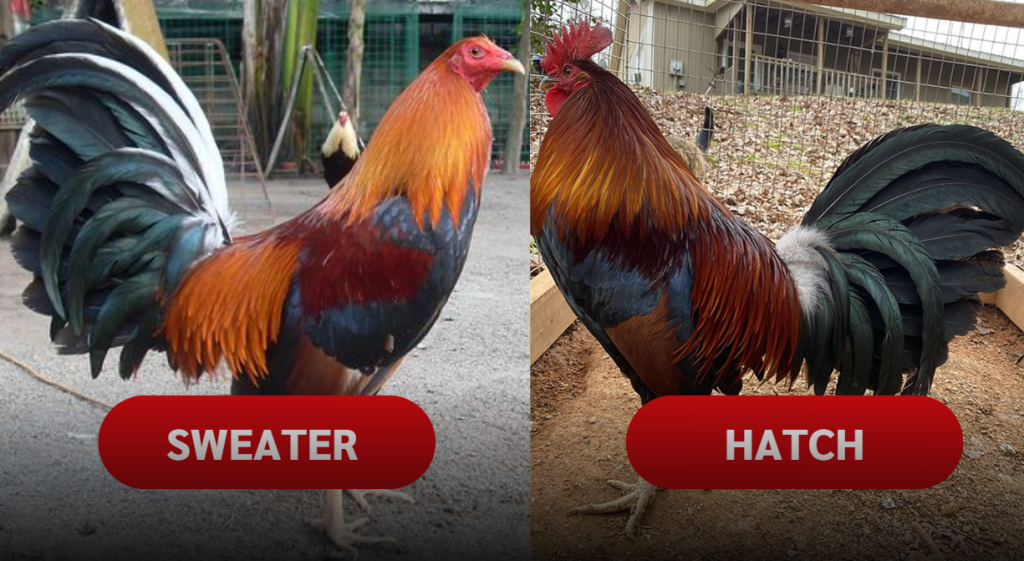
There’s no absolute winner—because success depends on context:
| If you want… | Choose |
|---|---|
| Speed & deadly cut | Sweater |
| Durability & heart | Hatch |
| All-around performance | Hybrid (Sweater × Hatch) |
The reality is, true champions are often not purebloods—but carefully bred crosses, raised with dedication, conditioned with precision, and matched strategically.
Conclusion: The Real Secret Lies in the Handler
The debate between Sweater vs. Hatch isn’t just about bloodline superiority. It’s about how you train, condition, match, and believe in your fowl. The best handlers know that no bloodline wins without the right preparation.
In the end, both bloodlines dominate in their own way, and the key to victory lies in using their strengths wisely.
Read more:-
- Ang Papel ng Mananare (Gaffer) sa Sabong
- Nangungunang 10 Pinakabagong FIBA MVPs in 2025: Mga Rising Star at Global Basketball Icon
FAQs about Sweater vs. Hatch gamefowl:
Q1: Which is better for quick fights, Sweater or Hatch?
A: Sweater, due to its speed, cutting accuracy, and aerial attacks.
Q2: Why do breeders cross Sweater and Hatch?
A: To combine Sweater’s speed and Hatch’s power, creating a more balanced and versatile fighter.
Q3: Which bloodline is more durable in long fights?
A: Hatch, known for its endurance, toughness, and relentless pressure.
